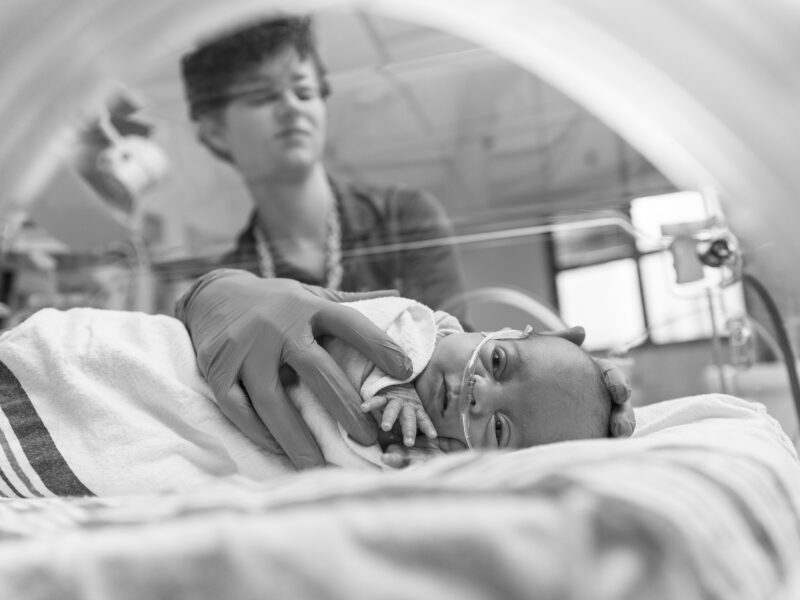Supporting Optimal Developmental Outcomes After Neonatal Opioid Withdrawal Syndrome
Supporting Optimal Developmental Outcomes After Neonatal Opioid Withdrawal Syndrome https://pediatricsnationwide.org/wp-content/uploads/2020/12/AdobeStock_32667489_mr-executive-functions-header-1024x575.gif 1024 575 Abbie Miller Abbie Miller https://pediatricsnationwide.org/wp-content/uploads/2023/05/051023BT016-Abbie-Crop.jpg- April 11, 2024
- Abbie Miller

Children with prenatal opioid exposure have a higher risk for developmental and behavioral concerns.
Prenatal opioid exposure is still far too common. Experts estimate that one infant who has been exposed to opioids is born every 15 minutes in the United States. While standard diagnostic criteria for neonatal opioid withdrawal syndrome (NOWS) were recently proposed, previous variability in definitions and coding of NOWS complicates current reporting and interpretation of developmental outcomes.
Regardless of the defining criteria for NOWS, prenatal opioid exposure has been linked with developmental and behavioral impairment for children in infancy and throughout childhood.
In a recent review from Kristen Benninger, MD, MSc, principal investigator in the Center for Perinatal Research at Nationwide Children’s Hospital, and her collaborators explore whether opioid exposure itself causes issues with development and behavior or whether these conditions are correlated and ultimately caused by other factors.
“A paucity of well-controlled, prospective longitudinal studies compare the neurodevelopment of children exposed to opioids prenatally and unexposed children. Some show differences, but small sample sizes and the influence of other factors make it hard to illustrate causation,” explains Dr. Benninger, who is also a neonatologist at Nationwide Children’s and assistant professor at The Ohio State University. “It is nearly impossible to disentangle opioid exposure from socioeconomic, environmental, genetic or epigenetic factors that impact women with substance use disorder.”
The evidence, carefully laid out in Dr. Benninger’s review, supports a need for neurodevelopmental follow-up of infants affected by NOWS.
“Follow-up helps us to ensure adequate social support, access to resources, and developmental and behavioral surveillance,” Dr. Benninger says. “Early referral to appropriate services can change the trajectory for these children and help them achieve the best possible outcome.
Recommendations from Dr. Benninger and team for follow-up care include visits at 2-4 weeks post-discharge, 3-4 months, 1 year, 2 years, 3 years, and school age. At each visit, they suggest age-specific developmental and/or behavioral assessments and comprehensive developmental care including:
- Evaluating social determinants of health and family functioning.
- Identifying gaps in resource needs and access and making appropriate referrals.
- Linking to Early Intervention and Head Start programs.
- Supporting behavioral and parenting needs.
- Supporting caregiver mental health and addiction recovery referrals.
- Ensuring connection with a primary care pediatrician for regular care.
“Caring for children who experienced prenatal exposure to opioids requires a comprehensive and, most importantly, a non-judgmental approach,” says Dr. Benninger. “We have the opportunity to help support and strengthen these families.”
Reference:
Benninger KL, McAllister JM, Merhar SL. Neonatal Opioid Withdrawal Syndrome. Clinics in Perinatology. 2023;50(1):17-29.
Image credit: Adobe Stock
About the author
Abbie (Roth) Miller, MWC, is a passionate communicator of science. As the manager, medical and science content, at Nationwide Children’s Hospital, she shares stories about innovative research and discovery with audiences ranging from parents to preeminent researchers and leaders. Before coming to Nationwide Children’s, Abbie used her communication skills to engage audiences with a wide variety of science topics. She is a Medical Writer Certified®, credentialed by the American Medical Writers Association.
-
Abbie Millerhttps://pediatricsnationwide.org/author/abbie-miller/
-
Abbie Millerhttps://pediatricsnationwide.org/author/abbie-miller/
-
Abbie Millerhttps://pediatricsnationwide.org/author/abbie-miller/
-
Abbie Millerhttps://pediatricsnationwide.org/author/abbie-miller/
- Posted In:
- Clinical Updates
- In Brief
- Research







